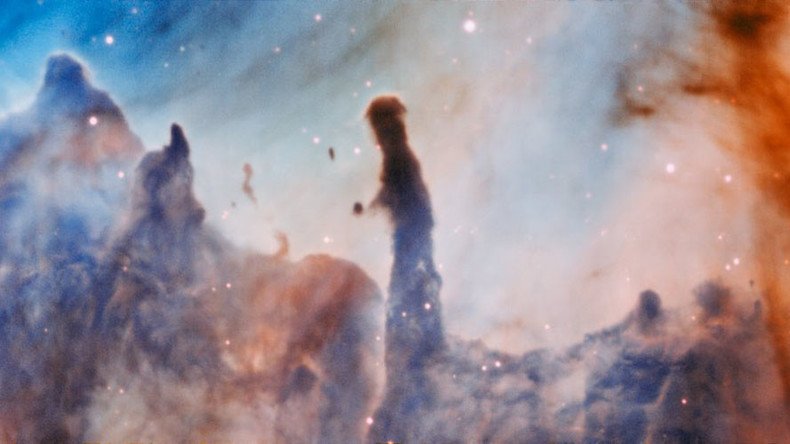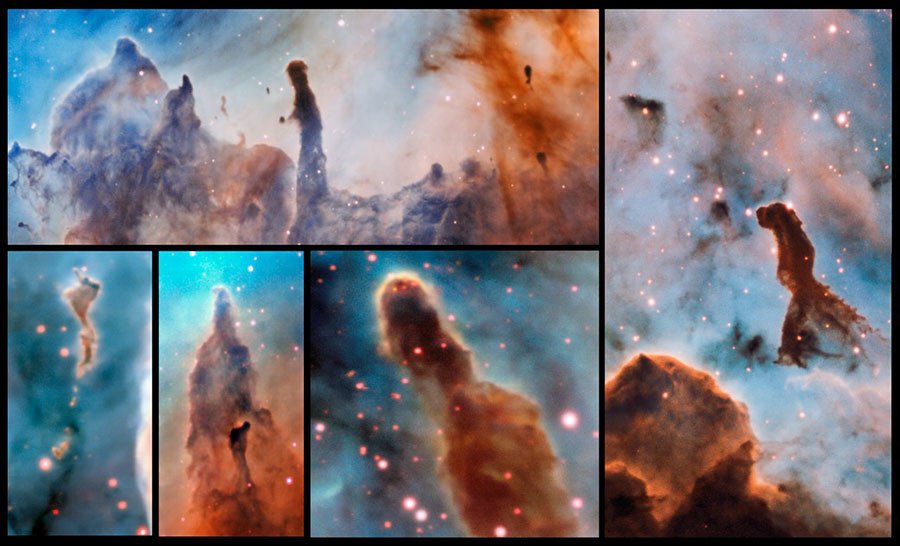‘Pillars of Destruction’: Mesmerizing images reveal interstellar activity (PHOTOS)

The European Space Observatory has released striking images of gaseous activity within a star-forming region called the ‘Carina Nebula’.
The spectacular observations recorded by the ESO’s Very Large Telescope reveal vast pillar-like structures within the interstellar region of the Carina constellation.
The pillars are vast clouds of dust and gas within a hub of star formation about 7,500 light-years away from Earth, according to the ESO.

Thousands of images, at different wavelengths of light, were created by the telescope’s high-tech instruments and analyzed by an international team of astronomers.
Ten pillars were identified in total, and a clear link was established between the radiation emitted by nearby massive stars and the features of the pillars.
Although majestic in appearance, the ‘pillars of destruction’ have been given their somewhat foreboding name as the emerging massive stars destroy the clouds from which they originate.
They do this by blasting out large amounts of powerful, ionising radiation in a process known as ‘photoevaporation’ - these emissions are so powerful, they have the potential to strip atoms of their orbiting electrons.
Scientists observed the results of the photoevaporation, including the loss of mass from the pillars, and found a clear correlation between the amount of ionising radiation being emitted by nearby stars and the dissipation of the pillars.
However, this is no cosmic calamity as the relationship between the stars and pillars are highly complex. It is possible that the radiation and celestial winds from massive stars can also help acreate denser spots within the pillars, which can then form stars, according to an ESO statement.
Pillars of Creation, 7000 light-years away from Earth. pic.twitter.com/gca7LpvAJv
— ☄ Exclusive Gems (@ExclusiveGems) October 31, 2016
These captivating observations come 21 years after the striking and now well known image of the ‘Pillars of Creation’ captured by the Hubble telescope in 1995 in a small region of the Eagle Nebula.











